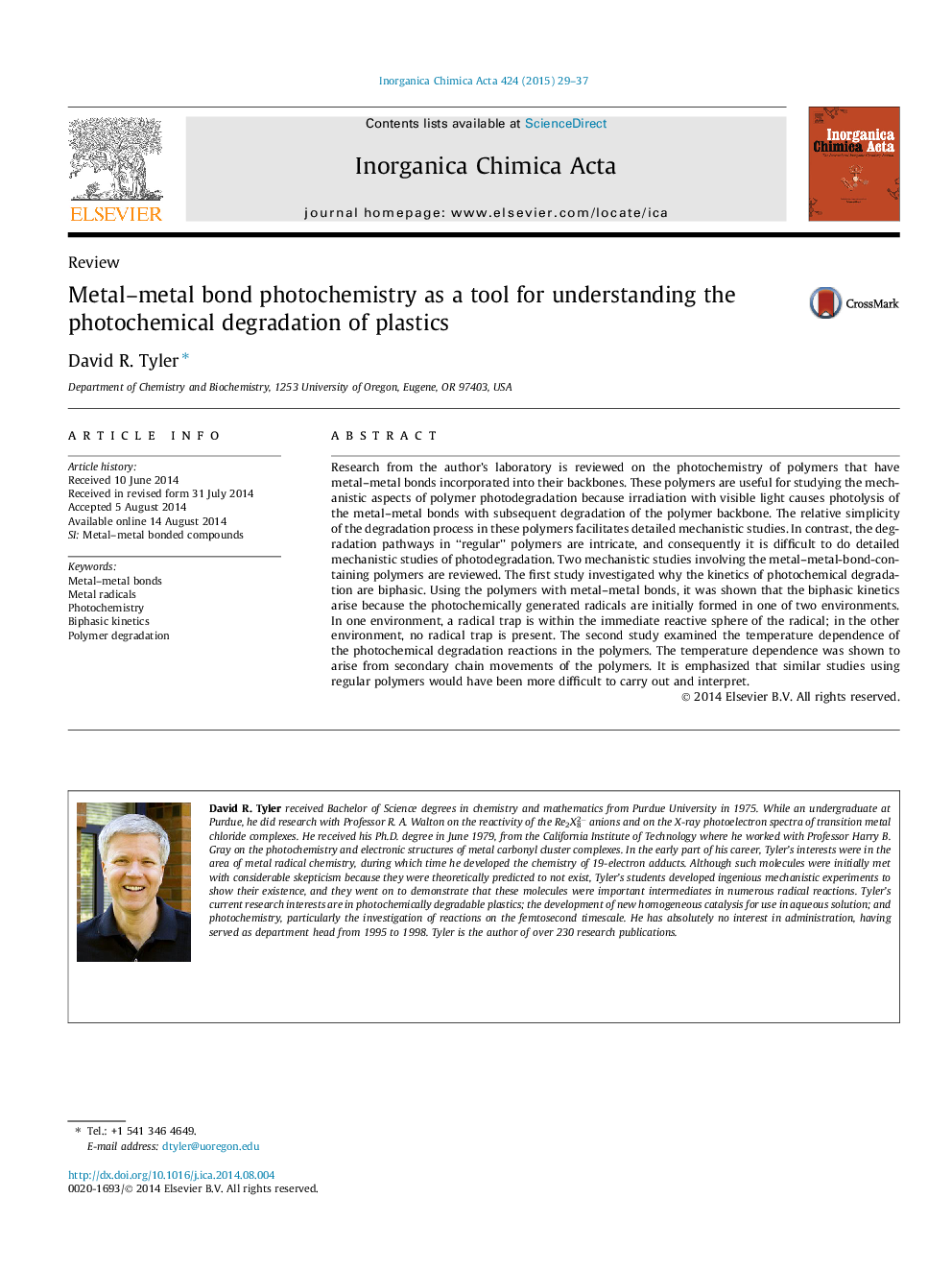| Article ID | Journal | Published Year | Pages | File Type |
|---|---|---|---|---|
| 1312131 | Inorganica Chimica Acta | 2015 | 9 Pages |
•Polymers with metal–metal bonds along the backbone are photochemically degradable.•The kinetics of polymer degradation was modeled with M–M-bond-containing polymers.•The biphasic kinetics of degradation is attributed to different chain environments.•The temperature dependence of polymer degradation was modeled with the M–M polymers.•The temperature dependence is attributed to secondary relaxation chain motions.
Research from the author’s laboratory is reviewed on the photochemistry of polymers that have metal–metal bonds incorporated into their backbones. These polymers are useful for studying the mechanistic aspects of polymer photodegradation because irradiation with visible light causes photolysis of the metal–metal bonds with subsequent degradation of the polymer backbone. The relative simplicity of the degradation process in these polymers facilitates detailed mechanistic studies. In contrast, the degradation pathways in “regular” polymers are intricate, and consequently it is difficult to do detailed mechanistic studies of photodegradation. Two mechanistic studies involving the metal–metal-bond-containing polymers are reviewed. The first study investigated why the kinetics of photochemical degradation are biphasic. Using the polymers with metal–metal bonds, it was shown that the biphasic kinetics arise because the photochemically generated radicals are initially formed in one of two environments. In one environment, a radical trap is within the immediate reactive sphere of the radical; in the other environment, no radical trap is present. The second study examined the temperature dependence of the photochemical degradation reactions in the polymers. The temperature dependence was shown to arise from secondary chain movements of the polymers. It is emphasized that similar studies using regular polymers would have been more difficult to carry out and interpret.
Graphical abstractPolymers with metal–metal bonds along the backbone are useful for studying the mechanistic aspects of plastics photodegradation because irradiation with visible light causes photolysis of the metal–metal bonds with subsequent degradation of the polymer backbone.Figure optionsDownload full-size imageDownload as PowerPoint slide
